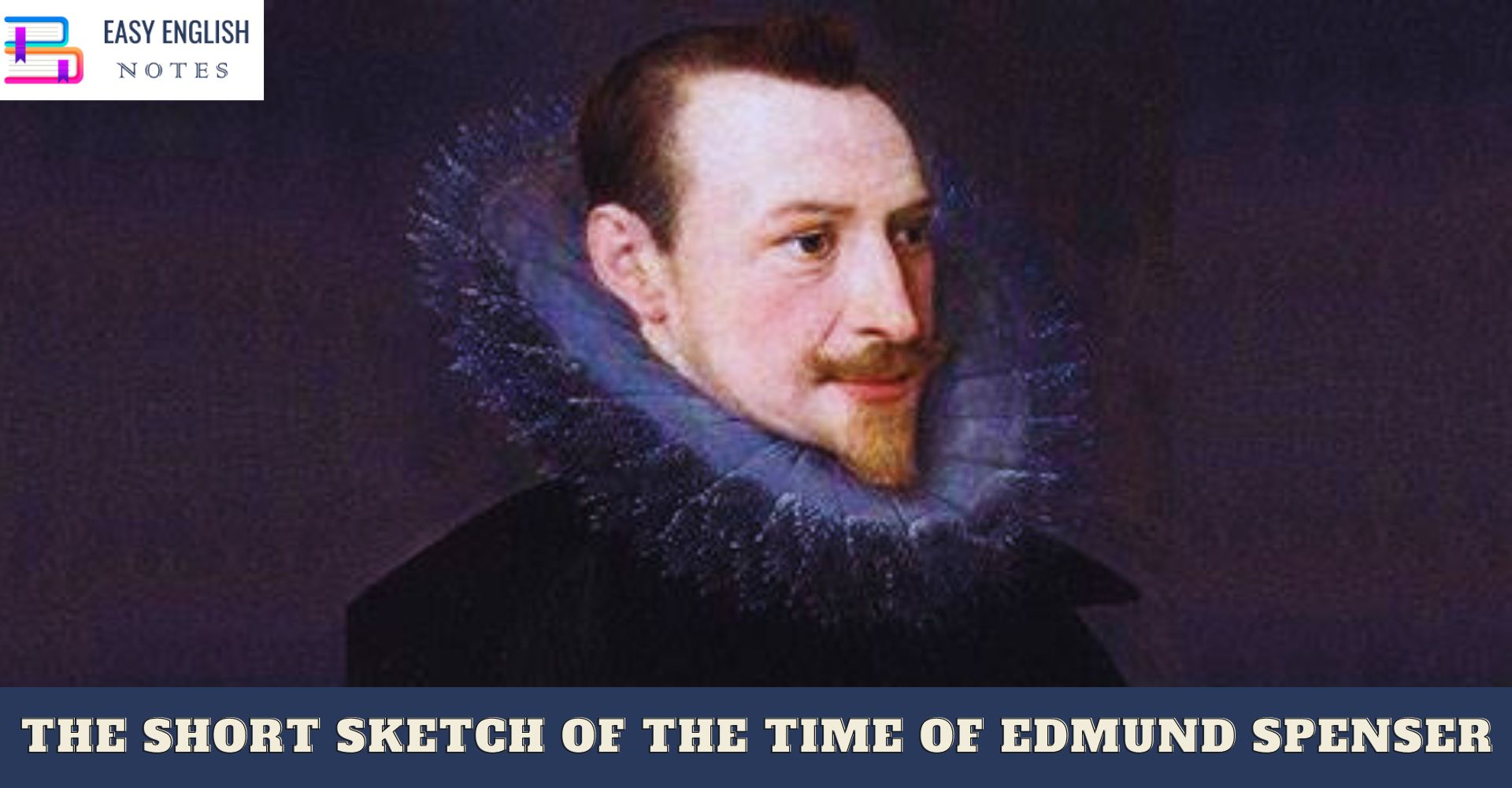Edmund Spenser lived during the late 16th century, a time of significant political, social, and cultural changes in England.
Here is a short sketch of the time of Spenser:
(1) For a hundred and fifty years after Chaucer’s death poetry was in a decadent state in England. In the dawn of the Renaissance came Sir Thomas Wyatt and the Earl of Surrey: they did something to revitalize poetry, Blank verse and sonnet-writing were introduced, and metrical measure was reformed. This was just the beginning. Poetry had to wait for its full blossoming until Spenser published the first three books of The Faerie Queene in 1590.
(2) The political condition of the time was anything but favourable to the cultivation of letters. The War of the Roses during the last half of the fifteenth century seriously upset settled order and tranquillity and changed the social structure too. The War of the Roses spelled the death of feudalism. The country was in a disturbed condition during the reign of Henry VIII, Edward IV. And Mary. Order seemed to have been finally restored under Elizabeth, even though, her reign was cut into by Popish counter-plots. The Queen was the rallying cry of the people: they were never better united than now in defence of their Queen and their country – and they were able to repel the Armada and defeat the counter-plots at home. It is this feature of life which is particularly reflected in Spenser’s Faerie Queene. Spenser pictures the court of Gloriana as the centre of knightly deeds for the redress of wrongs from which the country suffered. He introduces some of the political figures of the day as his knights -Sidney. Leicester. Lord Grey of Wilton, etc. The patriotic feeling that swept through the country was no doubt generated in the court of Elizabeth, and Spenser himself was personally introduced to the Queen, and intimately connected with the court too. England. For the first time, was now a great and united country. Her sea-faring activities. Her trade and commerce were a natural result of this epoch of revival.
(3) Spenser readily reacted to the outburst of national feeling in the country, which particularly centred on the Queen. And in The Faerie Queene there is the triumphant note, singing the glory of the Queen and the sreatness of her courtiers, statesmen and soldie rs. Politics and religion were mixed together in those days-and the issues of politics and religion came into The Faerie Queene. England had to fight against the Papacy which also threatened her political sovereignty. Philip II of Spain was the champion of the Papacy, and the religious autonomy that was secured by Henry VIII would have been destroyed if the people had not rallied round the throne of Elizabeth. The counter-plots against Elizabeth were organized by the Catholics at home and abroad-and they had to be put down to secure the safety of the Queen and her throne. In the First Book of The Faerie Queene, Archimago is the caricature of the Pope of Rome. And Duessa stands for the Romish Church. In the allegory of the First Book of The Faerie Queene, the main interest of the poet is the defence of the Church of England: Una is Truth, and therefore, stands for the Church of England. The Redcross knight is Holiness which means the love of God: and he is severed from Una (Truth), and is exposed to trials and temptations. The Redcross knight’s final deliverance is wrought by Truth until he has submitted to all the necessary discipline. The defence of Truth and the Church of England seems to be then the principal motive of the First Book of The Faerie Queene.
Also Read :
- Compare Hamlet with Macbeth, Othello and other Tragedies
- “The Pardoner’s Tale” is the finest tale of Chaucer
- Prologue to Canterbury Tales – (Short Ques & Ans)
- Confessional Poetry – Definition & meaning
(4) The political issue is not, however, made so prominent. The enemy of England is represented in the pagans – Sansfoy. Sansjoy and Sanstoy. At the end of the Twelfth Canto, the Redcross knight is returning to the court of Gloriana-(St.18):
“And her to serve sixe yeares warlike wize.
Gainst that proud Paynim king that works her teene.”
The Paynim King is Philip II of Spain who continued hostilities against England. After the defeat of the Armada.
(5) There seems to be a link-up between the present and the past in the poet’s use of the old romance of chivalry- in his introduction of knights and ladies, dragons. Monsters, etc. It can but suggest his yearning for the days of chivalry that are gone. Does he desire to revive the old chivalric ideal with Gloriana as the object of knightly. Adoration? There is Prince Arthur (Leicester) who tells his story of love for the Fairy Queen in the First Book of The Faerie Queene and undertakes his adventures in her honour. Spenser adopts a convention that is dead or dying, and we may question whether it harmonizes well with the allegory he intends.
In summary, the time of Spenser in the late 16th century was a period of cultural, intellectual, and artistic blossoming in England. It was an era characterized by national pride, religious tensions, literary achievement, and exploration. Edmund Spenser’s work, along with that of his contemporaries, continues to be celebrated and studied as a significant contribution to English literature.
PLEASE HELP ME TO REACH 1000 SUBSCRIBER ON MY COOKING YT CHANNEL (CLICK HERE)











